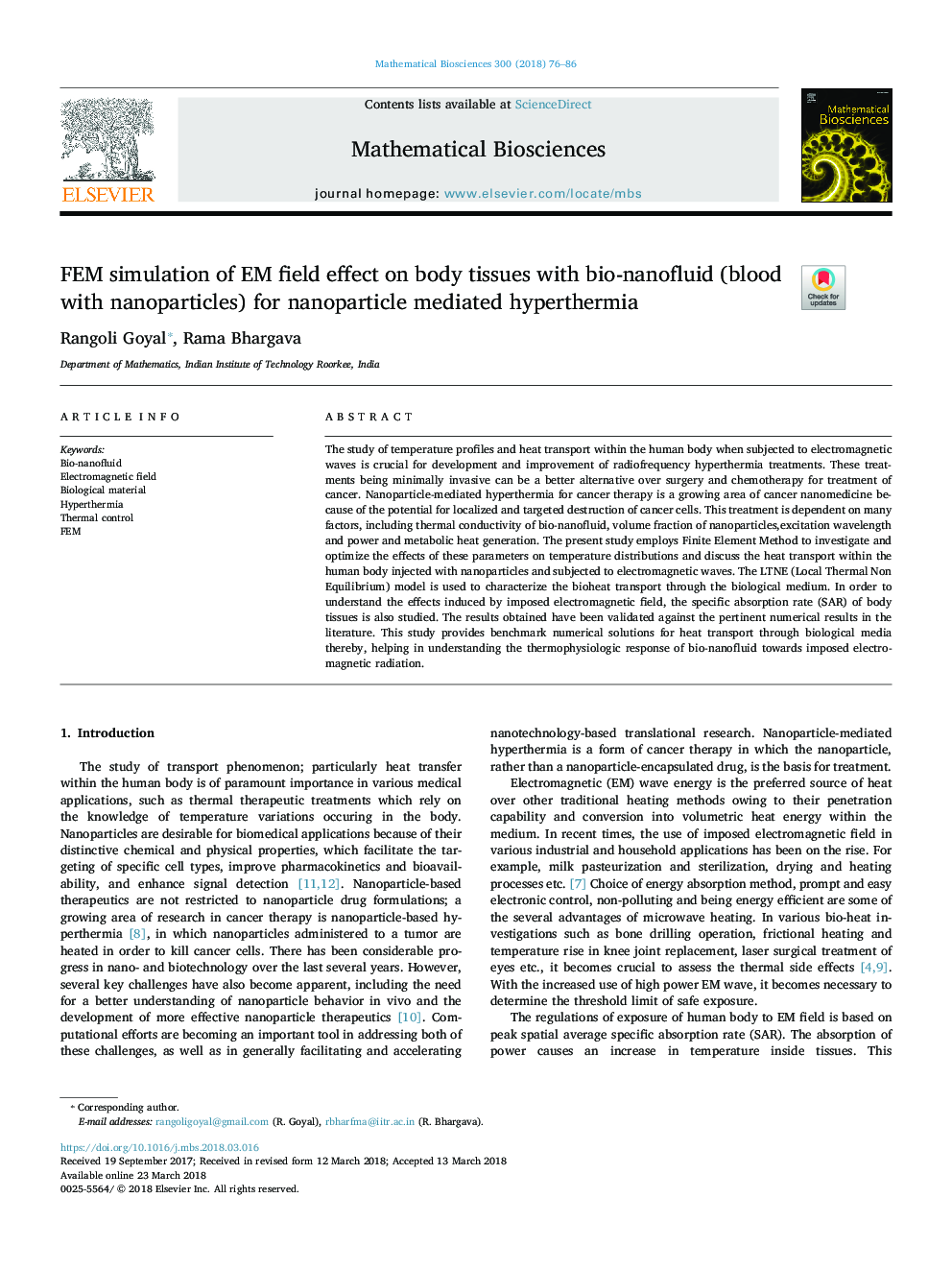| Article ID | Journal | Published Year | Pages | File Type |
|---|---|---|---|---|
| 8877015 | Mathematical Biosciences | 2018 | 11 Pages |
Abstract
The study of temperature profiles and heat transport within the human body when subjected to electromagnetic waves is crucial for development and improvement of radiofrequency hyperthermia treatments. These treatments being minimally invasive can be a better alternative over surgery and chemotherapy for treatment of cancer. Nanoparticle-mediated hyperthermia for cancer therapy is a growing area of cancer nanomedicine because of the potential for localized and targeted destruction of cancer cells. This treatment is dependent on many factors, including thermal conductivity of bio-nanofluid, volume fraction of nanoparticles,excitation wavelength and power and metabolic heat generation. The present study employs Finite Element Method to investigate and optimize the effects of these parameters on temperature distributions and discuss the heat transport within the human body injected with nanoparticles and subjected to electromagnetic waves. The LTNE (Local Thermal Non Equilibrium) model is used to characterize the bioheat transport through the biological medium. In order to understand the effects induced by imposed electromagnetic field, the specific absorption rate (SAR) of body tissues is also studied. The results obtained have been validated against the pertinent numerical results in the literature. This study provides benchmark numerical solutions for heat transport through biological media thereby, helping in understanding the thermophysiologic response of bio-nanofluid towards imposed electromagnetic radiation.
Related Topics
Life Sciences
Agricultural and Biological Sciences
Agricultural and Biological Sciences (General)
Authors
Rangoli Goyal, Rama Bhargava,
